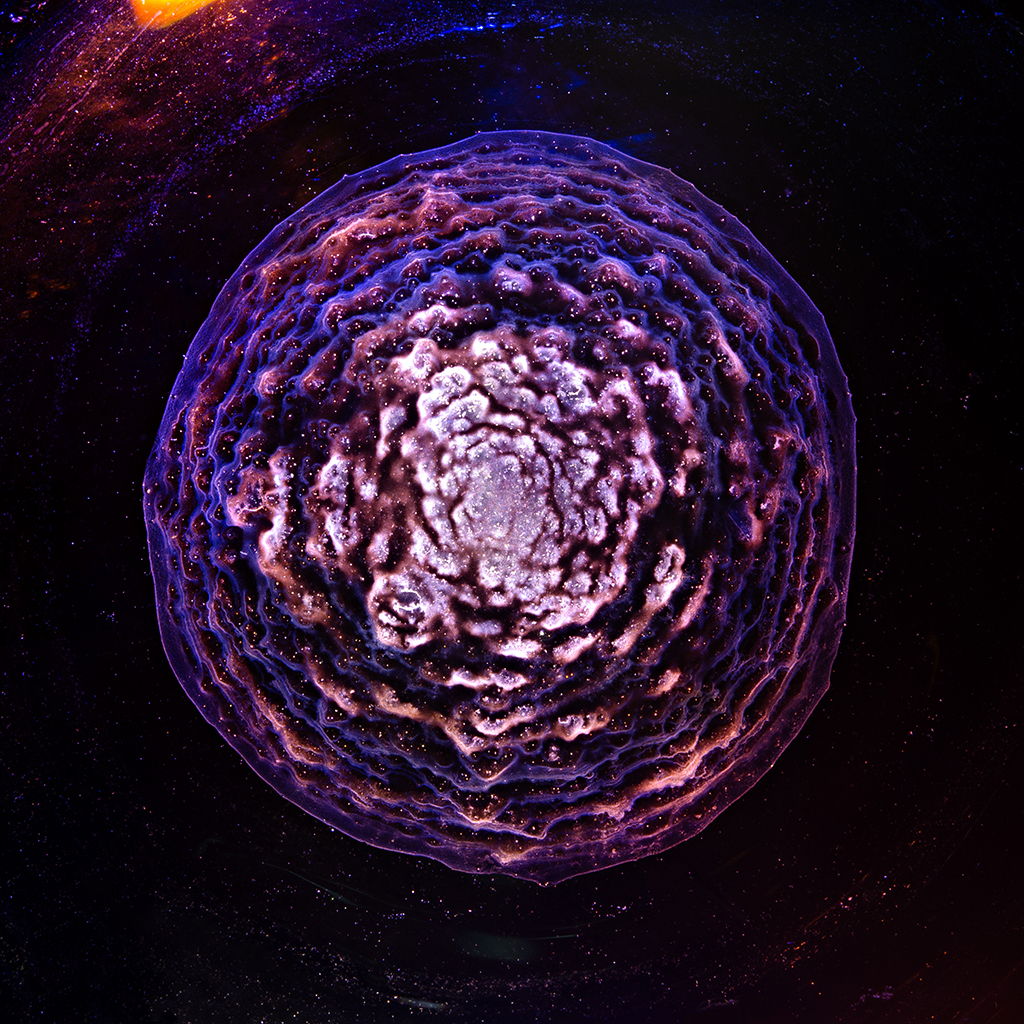
More than happiness found in a whisky glass
Eleven years ago, amateur photographer Ernie Button found something beautiful at the bottom of an empty whisky glass.
It happened completely by accident. One morning, as Ernie carried two drained whisky glasses to the dishwasher after they had been left out overnight after an evening dram, he noticed something in the bottom of the glass.
Ernie, from Phoenix, Arizona, said: ‘When I held a glass up to the light there were these fine, delicate lines in the bottom.

The pattern created by a Bruichladdich (Photo: Ernie Button)
‘Later I took it into the studio to see whether I could capture it effectively on camera – that is how it all began.’
That was over a decade ago and since then Ernie has photographed hundreds of different whiskies in this way. Ernie explained: ‘At first I used only white lighting to illuminate these patterns, but they came out very dull. However, photographing them under coloured lights really brought the images to life.’
When Ernie attempted this technique on other alcohols, it did not work.

Photographer Ernie Button
‘I did some crude experiments on un-aged whiskies and other spirits and nothing was visible to the naked eye,’ continued Ernie. ‘It was then that I realised this phenomenon is completely unique to cask aged whiskies.’
The explanation for this intricate patterning is that when a whisky is aged in a cask, it absorbs organic elements from the wood. When a glass is drained, the remaining whisky residue evaporates very quickly due to its high alcohol content and what is left behind is this organic matter.
When other fluids dry, particles are pushed to the edge and will form a ring, whereas an aged whisky dries leaving an even coating across the surface of the glass.
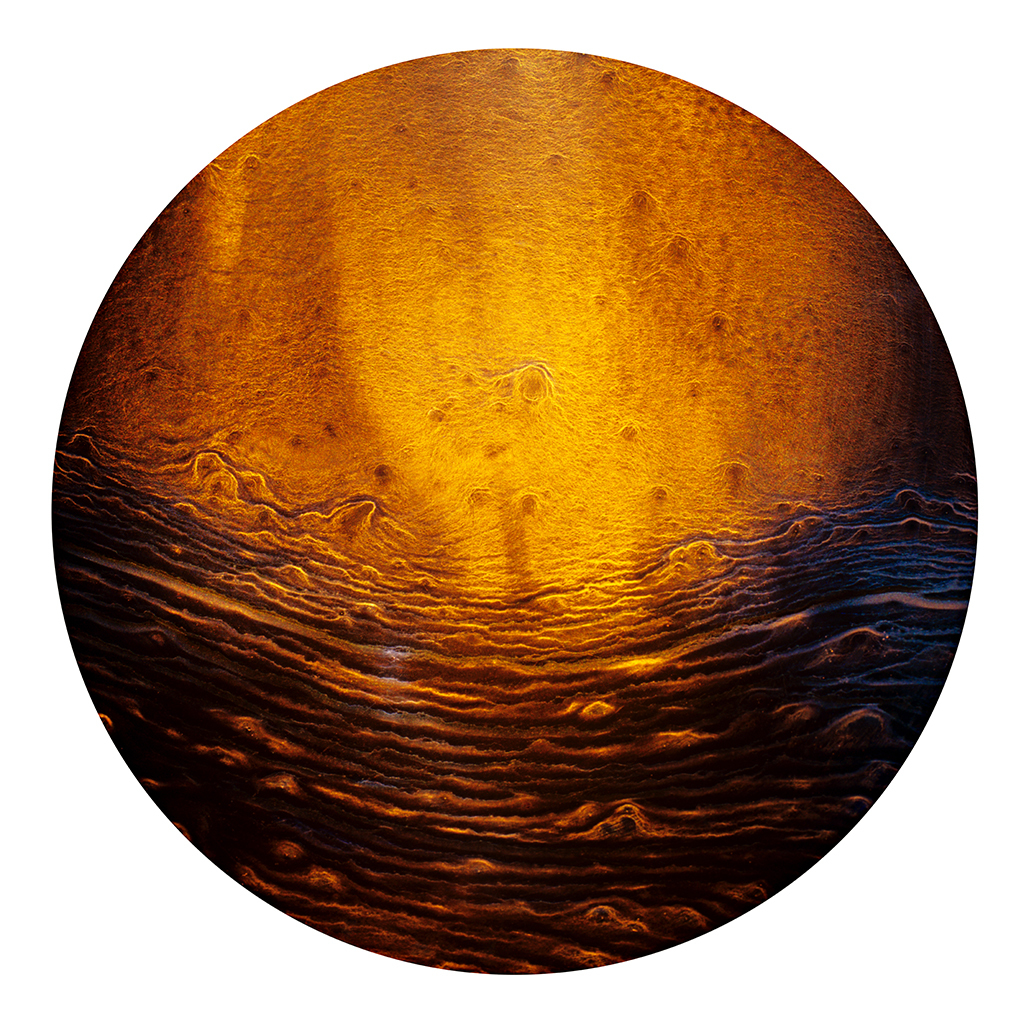
A Glenfiddich (Photo: Ernie Button)
A Speyside whisky drinker himself, Ernie has looked for patterns between different whiskies and whiskies from different regions of Scotland.
He said: ‘There was a point in the early days of the project when I thought Islay whiskies were a bit more temperamental and harder to produce, however there are so many other variables, such as the time of year, quantity of liquid in the glass and imperfections in the glass itself, it is very hard to spot a correlation – but I think not. ‘Every glass is slightly different, even if it is the same whisky – a little like a snowflake.’
Upon his discovery, Ernie contacted Princeton University’s Complex Fluids Group who, on further experimentation and comparison, confirmed that aged whisky is in fact unique in its consistent coating.
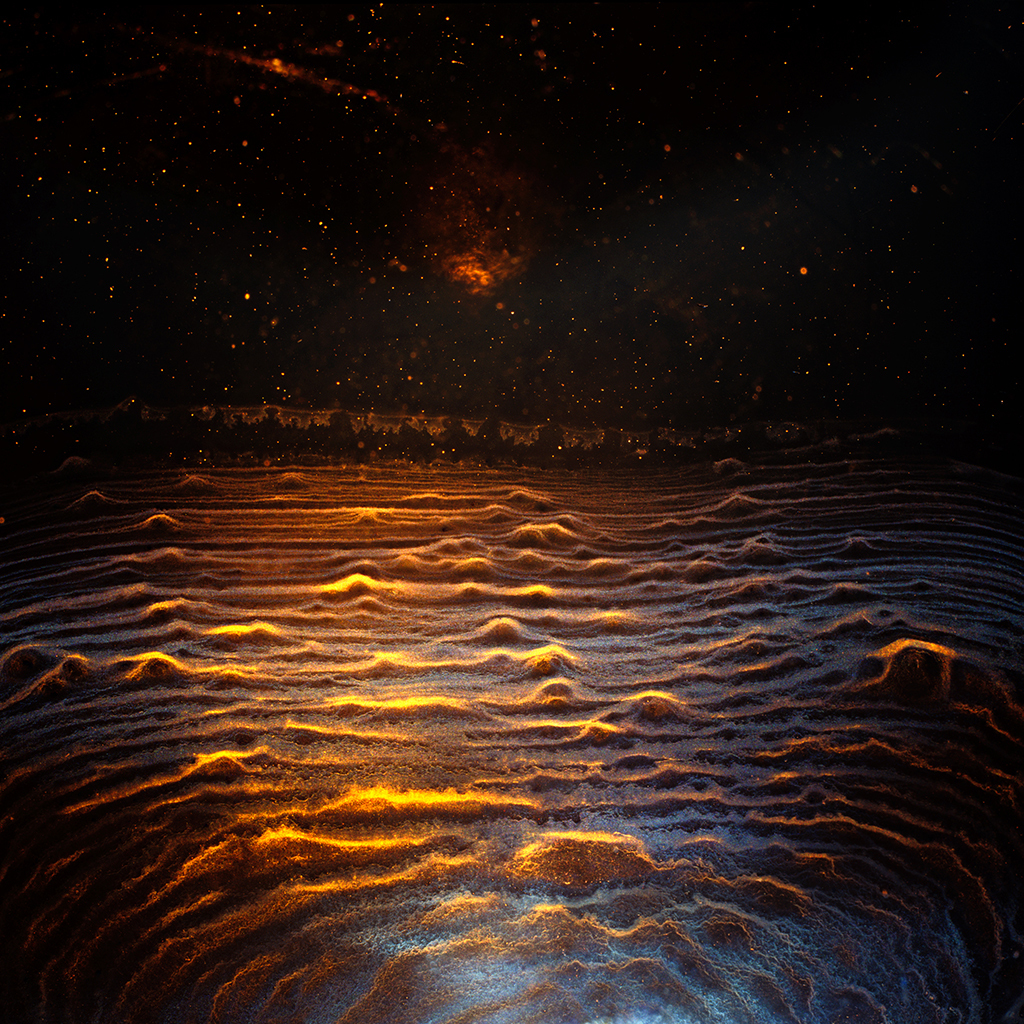
A Glenlivet (Photo: Ernie Button)
This could possibly be a very significant discovery for the paint and 3D modelling industries for whom the whole premise is to create a product which will coat evenly.
Ernie concluded: ‘It has been a very interesting project, the fact that a seemingly clear liquid can leave these lines and patterns in the bottom of a glass with such regularity is fascinating.
‘I really owe this project to my wife and her father as they are the whisky drinkers in the family and got me into it.’
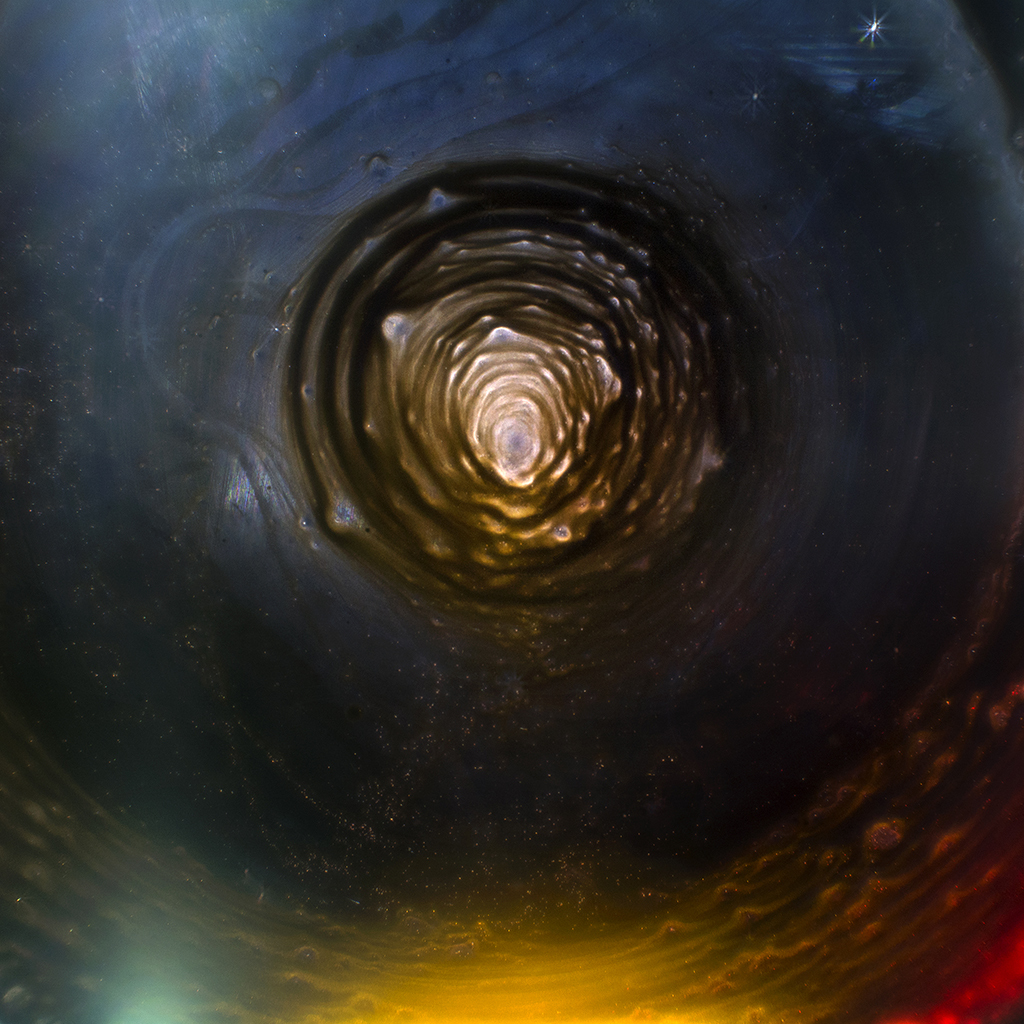
A photograph of a Highland Park (Photo: Ernie Button)
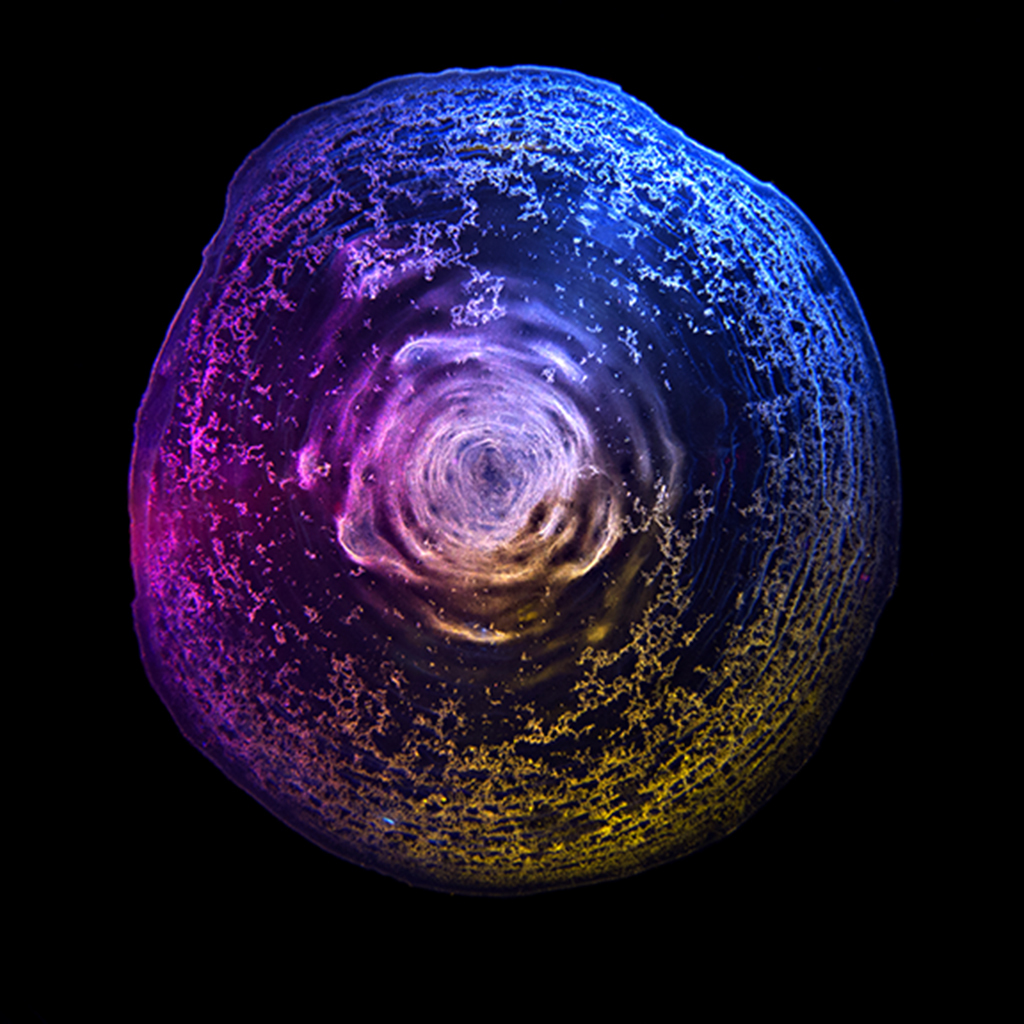
A Macallan (Photo: Ernie Button)
TAGS

